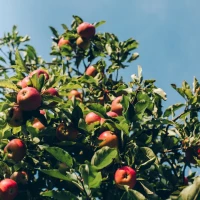Cantaloupes are a seasonal delight, a juicy and nutritious vegetable masquerading as a fruit that many anticipate as the weather warms. But, selecting the perfect cantaloupe can be as challenging as it is rewarding. With seemingly endless rows at the market, how do you pick out a cantaloupe that is ripe and ready to tantalize your taste buds? This ultimate guide is your key to unlocking the secrets of cantaloupe selection, ensuring that you bring home the best melon every time.
Discovering the ripest and most succulent cantaloupe is not merely a game of chance. It involves understanding the subtleties of texture, color, and scent – nuances that can discern a garden-variety cantaloupe from a truly sublime one. Whether you’re a seasoned melon enthusiast or a newcomer to the world of cantaloupes, this article will equip you with the knowledge to select cantaloupes with confidence.
The Basics of Cantaloupe Selection
Understanding Cantaloupe Varieties
Before diving into the selection process, it’s essential to acknowledge that not all cantaloupes are created equal. Varieties such as the North American cantaloupe, with its characteristic netted skin, and the European cantaloupe, known for its smooth peel, have different indicators for ripeness. Grasping the distinctions between these types can significantly improve your melon-picking protocol.
Ripeness Indicators
While cantaloupe selection may seem arcane, certain clues can guide you to the desired choice:
- Skin Texture: A ripe cantaloupe will display a prominently netted or web-like texture, a sign that it’s ready to be savored.
- Background Color: The ideal cantaloupe has a creamy beige to yellow background color, betraying its maturity.
- Firmness: Gentle pressure on the blossom end should yield slightly under your touch.
- Fragrance: A sweet and musky aroma is a tell-tale sign that the cantaloupe is ripe.
Mastering the Techniques of Cantaloupe Selection
Visual Inspection
Eyes are our first analytical tool in the quest for the perfect cantaloupe. Visual cues can be highly revealing if you know what to look for:
- Netting and Webbing: Look for cantaloupes with well-defined netting. This lattice-like texture is a key indicator of quality.
- Background Hue: Cantaloupes should have a consistent beige or yellow undertone. A greenish hue often indicates under-ripeness.
Weight Evaluation
Next, evaluate the weight of each potential cantaloupe. A ripe melon will feel heavy for its size, hinting at the sweet juiciness contained within. It represents a good balance of water content and ripe flesh, and it plays a crucial role in the selection process.
Firmness Testing
Feel is another critical component. The cantaloupe should be firm overall but slightly supple at the blossom end. Avoid melons that are rock-hard or overly mushy, as these extremes usually signal that the cantaloupe is either underripe or past its prime.
Aroma Assessment
The art of smelling your cantaloupe shouldn’t be underrated. A ripe cantaloupe will emit a sweet and slightly musky scent from the blossom end. If the aroma is faint or non-existent, the cantaloupe might not yet be at the peak of ripeness.
Harnessing Seasonal Savvy for Cantaloupe Selection
The time of year can greatly affect the quality of cantaloupes available. Peak cantaloupe season typically runs from late spring through summer, during which the chances of finding a perfect melon are considerably higher. Off-season cantaloupes may have traveled long distances and could be less flavorful due to premature harvesting and extended storage times.
Considerations Beyond the Senses
Storing and Ripening at Home
Suppose you come across a cantaloupe that’s nearly perfect but not quite ripe. Fear not; cantaloupes can continue to ripen after being harvested. Place the cantaloupe in a paper bag on your countertop to encourage ripening. Once ripe, store it in the refrigerator to stall further ripening and preserve its delicious taste.
Nutritional and Health Benefits
While our focus is on flavor and texture, let’s not overlook the health benefits of cantaloupe. Rich in vitamins A and C, beta-carotene, and hydration-promoting water content, cantaloupes are a healthy addition to any diet.Boost your intake of essential nutrients and antioxidants by incorporating cantaloupe into your fruit rotation.
Advanced Cantaloupe Selection Tips
Cantaloupe Stems and Field Spots
An often-overlooked detail is the cantaloupe’s stem end. A smoothly indented stem end, where the melon naturally detached from the vine, is preferable. This signifies that the cantaloupe was picked when mature. Conversely, a stem still attached or a roughly torn stem end can indicate that the melon was harvested too early. Moreover, the presence of a field spot — the flat side where the cantaloupe rested on the ground — is a positive sign, as it indicates sun-ripening.
Steering Clear of Imperfections
Be wary of cantaloupes with cracks, soft spots, or mold. These imperfections can spell trouble and possibly lead to a quicker spoilage or an unpleasant eating experience. It’s best to select a cantaloupe that feels uniformly firm and has an intact rind without any breaches in its surface.
Serving and Enjoying your Perfectly Selected Cantaloupe
Ideal Pairings and Preparation
Once you’ve mastered the art of how to pick out a cantaloupe, you’ll want to savor it in the best possible ways. Cantaloupes are versatile; enjoy them raw in salads, blend them into smoothies, or wrap them in prosciutto for a sweet and savory treat. Preparing your cantaloupe with complementary foods can enhance its natural flavors and provide a refreshing culinary experience.
Creating Culinary Masterpieces
Don’t shy away from getting creative with your cantaloupe. Consider innovative recipes that highlight its sweet, refreshing taste. Infuse it into desserts, freeze it for popsicles, or incorporate it into chilled soups for a summertime delicacy. The culinary possibilities are endless with a perfectly picked cantaloupe.
Conclusion: Perfecting the Art of Cantaloupe Selection
Embracing the knowledge and nuances of cantaloupe selection can elevate your fruit-eating experience from mundane to exceptional. With these guidelines, picking out a cantaloupe becomes a deliberate and rewarding endeavor, ensuring that each cantaloupe you choose is a cut above the rest. Remember, the mosaic of texture, color, weight, and aroma will lead you to the ultimate prize—a luscious, flavor-packed cantaloupe that heightens any meal or serves as a delightful snack on its own. So, approach the cantaloupe display with confidence and excitement and prepare to indulge in the fruit of your discernment.










